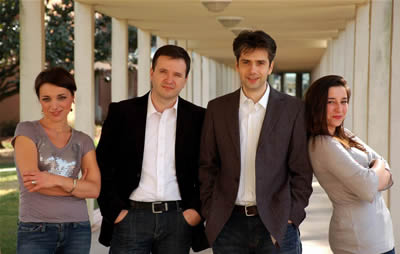Duke Chapel was aglow with holiday cheer once again for the Duke University Chorale and conductor Rodney Wynkoop‘s long-standing tradition of their interactive Christmas concert. Held every year without fail (even last year, where it was live-streamed from Baldwin Auditorium), the program covers both sacred and secular favorites, with audience participation through congregational singing and “offerings” of non-perishable food to Urban Ministries of Durham. Organist Joey Fala welcomed the audience in with prelude music, and accompanied several of the forthcoming pieces with great majesty. The chapel’s pews were perhaps not quite as packed full as the last time I reviewed this concert (pre-pandemic in 2018), but it’s worth saying that it still took two full hymns to collect donations from the audience members’ procession.
Regarding the program, I did find myself wishing for a bit more variety in the works’ origins - the repertoire spanned a great many centuries, but all were by European or American composers. As a result, English and Latin were the only featured languages. Perhaps this is the expectation for such a crowd-pleasing event with a wide audience, but it felt like a missed opportunity to introduce carols from different cultures, placed with care among the traditional repertoire.
This is not to say that the chorale’s performance itself was in any way hampered - every single featured piece contained elements of beauty. From John Rutter’s ethereal arrangement of “I Wonder as I Wander,” where the featured soprano soloist’s straight tone and tall vowels soared through the vaulted chapel, to Eric William Barnum‘s nostalgic and sincere “Sweeter Still,” the chorale sang with utter control and gentle expression. This particular piece also benefited greatly from the gentle piano accompaniment performed by Hye-Bin Song.
In a lot of ways, the more legato, meditative songs on the program outshone the upbeat ones. The Latin standards - Franz Biebl’s “Ave Maria” and “O magnum mysterium” by Tomás Luis de Victoria - were of course quite natural in the chapel space, and the tricky issue of balance between voice parts in such a live room was not present. In the former piece, tradition was circumvented, featuring one soprano and two tenors/basses for the chant-like solos that introduced each repetition of the refrain (the solos are originally written for basses and tenors). The closing “Sancta Maria” and “Amen” sections of “Ave Maria” were utterly beautiful, especially with a lofty soprano melody that was not overpowering. The Renaissance motet was performed with compellingly articulated phrases, especially through the intricate descending lines that peppered the music.
The 20-voice Duke Chamber Choir emerged from the larger chorale for a bit, singing Darmon Meader‘s a capella, motet-like arrangement of “We Three Kings.” This ensemble held tight to crisp phrases as each successive verse became more complex, full of repeating ostinatos and unexpected texture changes that blossom from the traditional melody.
The program’s secular portion featured an engaging reading of Dr. Seuss’ How the Grinch Stole Christmas, which contrasted charmingly with the first reading’s biblical text. Naturally, the time-honored but sometimes dreaded (by choristers) arrangement of “Sleigh Ride” by Hawley Ades made an appearance, complete with one student taking the coveted job of playing the slapper. That wasn’t the only instrument featured for the piece, though - dozens of tiny jingle bells were distributed through the audience to form a twinkly bell choir.
All told, with music and audience invitations, the Duke Chorale certainly succeeded at making the chapel’s concrete vault feel cozy and warm.











